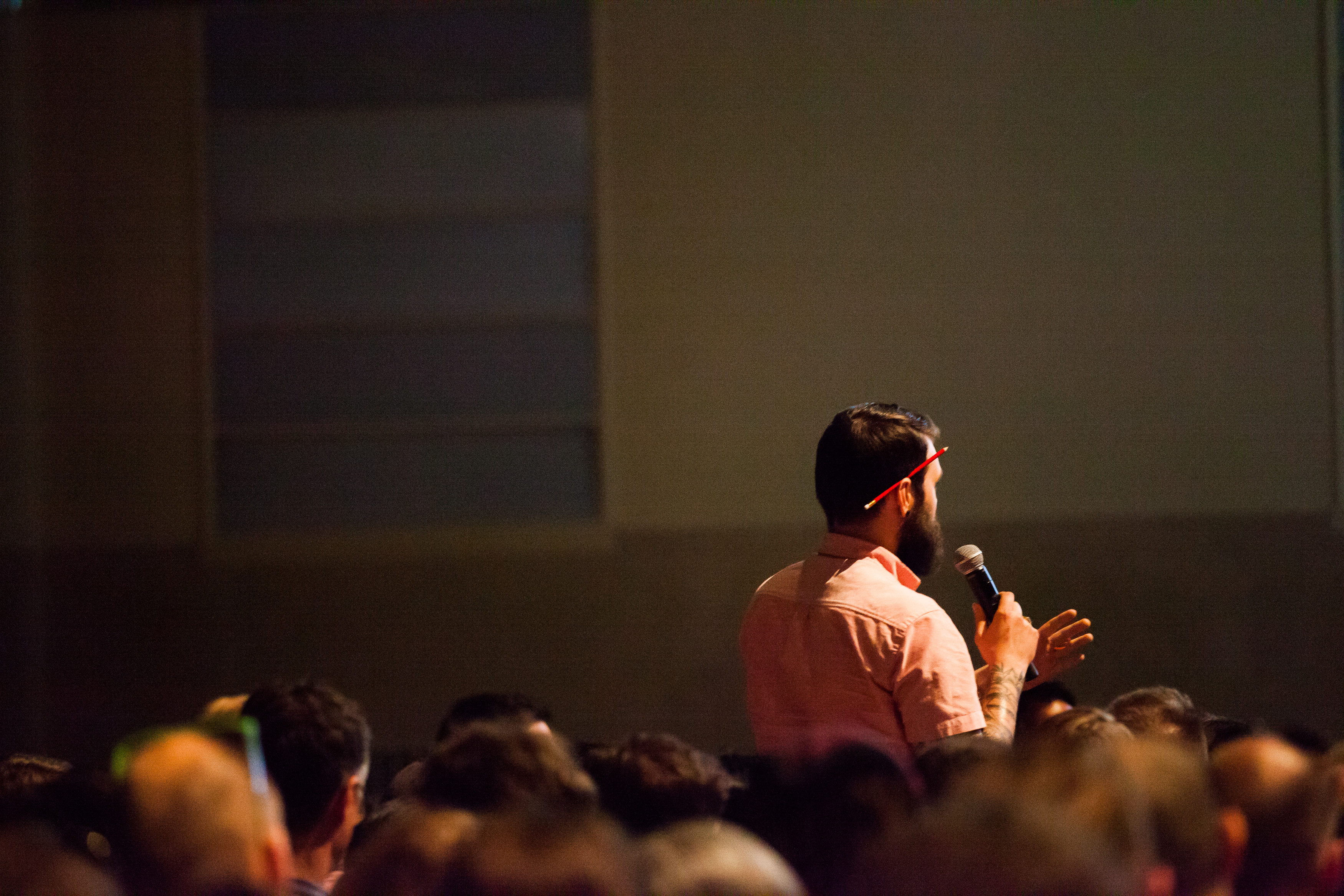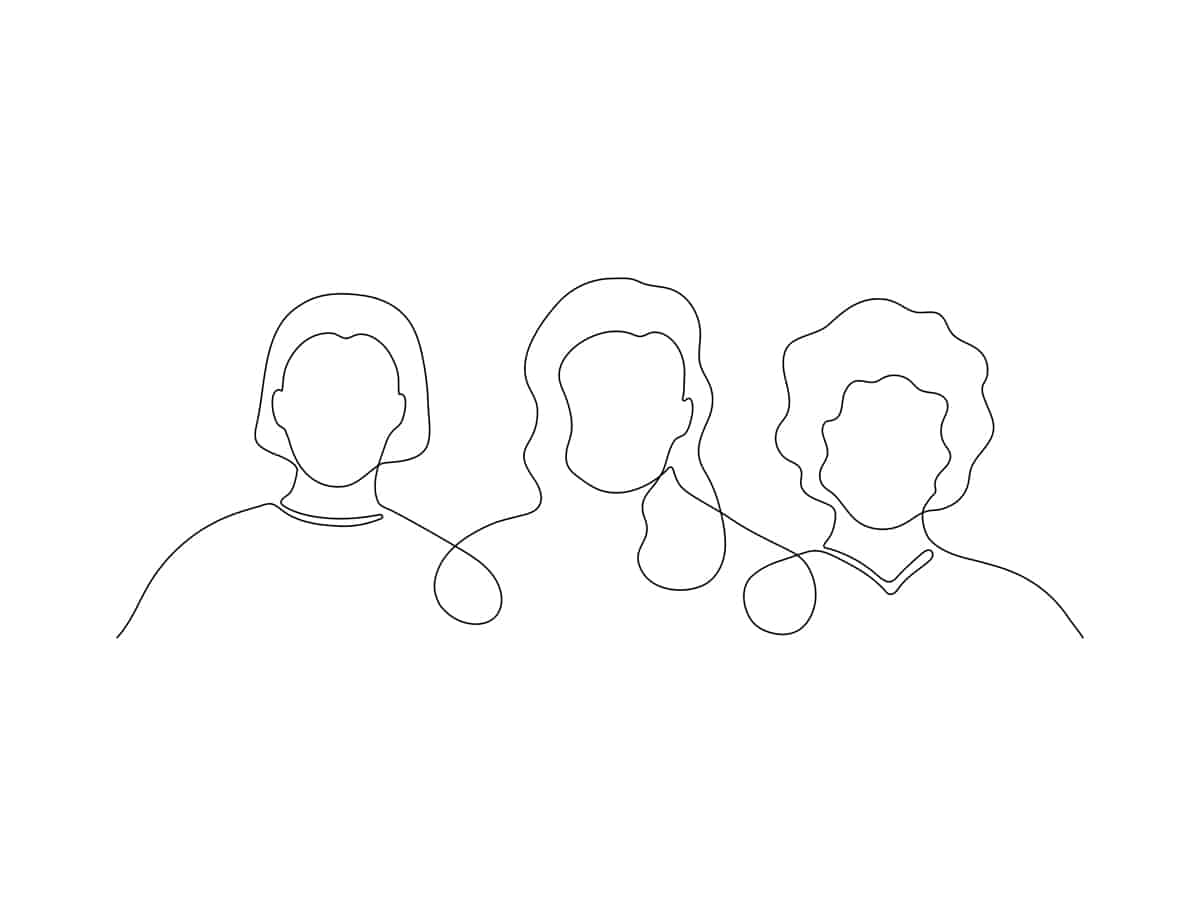No início deste ano, Format tive a honra de apresentar o Roman Mars Live em Toronto no Intercâmbio de designo museu de design do Canadá. Aqui estão algumas de nossas fotos favoritas do evento, bem como algumas das principais conclusões de nosso bate-papo com Roman.
Roman Mars sobre como 99% Invisível teve seu início...##
Sou produtor de rádio pública há quinze anos. Trabalhei em todo tipo de programa de rádio pública que existe. E, há cerca de quatro anos, comecei a 99% Invisívelum pequeno programa de rádio sobre arquitetura e design. Ele deveria ser incluído nos segmentos da edição matinal das estações de rádio públicas locais, mas acabou decolando como um podcast.

Na verdade, tudo começou porque o Instituto Americano de Arquitetura, a seção de São Francisco, e a KLA, a estação de rádio de São Francisco, tinham algumas pessoas em comum. O AIA foi até a KLA e sugeriu que talvez houvesse um segmento sobre um edifício em São Francisco que pudéssemos fazer como uma história. Eles me perguntaram o que eu achava disso, que tipo de programa eu faria se fosse eu, e fiquei realmente interessado em expandir a noção para todos os tipos de design - não necessariamente sobre São Francisco, mas vinculando São Francisco, porque São Francisco é um lugar muito voltado para o design.
Foi muito difícil reduzi-lo a apenas quatro minutos - sempre tenho uma história muito mais longa para contar. Por fim, chegou a um ponto em que a última anedota que eu não conseguia cortar, eu simplesmente a deixava, trancava e a colocava como podcast. Muito rapidamente, durante o processo, percebi que estava contando a versão mais longa e cortando-a para fazer a versão curta, em vez de fazer a versão curta e permitir que ela se expandisse. Eu sabia que estava contando histórias que só poderiam ser contadas em 15 minutos, e a versão curta era realmente difícil de fazer depois desse ponto.
O que eu gosto... é a tensão de contar histórias sobre design, sem recursos visuais.
##... sobre por que ele escolheu fazer um podcast sobre design visual ...##
Bem, fundamentalmente, o rádio é a coisa que eu sei fazer. Temos pensado em expandir para outras mídias, mas isso não é natural para mim. O que eu gosto nele é, na verdade, a tensão de contar histórias sobre design, sem recursos visuais. Na maioria das vezes, sinto que o design fica "preso" à forma como ele faz você se sentir por meio de sua estética, em vez da história de seu propósito e significado. Quando você remove o elemento visual, aprende algo bastante fundamental sobre o design: o design tem a ver com história, processo e solução de problemas. Eu me sinto realmente seduzido pelas histórias das coisas; posso gostar de edifícios realmente feios se eles tiverem uma boa história.
Portanto, o verdadeiro "problema" a ser superado [de fazer um podcast sobre design visual] é, na verdade, o ponto forte do programa.


Os podcasts são mais íntimos - é uma conexão pessoal.
##... sobre o poder de ouvir ...##
É um poder real, ser a voz dentro da cabeça de alguém. Posso fazer com que você pense coisas que não necessariamente pensaria. Essa é a premissa do programa: um tipo de entusiasmo nerd pelo mundo. [Por exemplo,] você pode olhar para algo e odiá-lo automaticamente. Mas se você não tiver nenhum outro estímulo, então o que eu digo é a verdade - e você está junto para o passeio. E você pode realmente chegar a um ponto diferente do que chegaria sozinho.
##... sobre o futuro da Radiotopia ...##
Achei que poderíamos usar o modelo de 99% Invisível e aplicá-lo a outros criadores de rádios públicas que não se enquadram realmente no domínio tradicional do rádio. [Juntos,] queríamos criar nosso próprio pequeno mundo refeito do rádio, com todo o idealismo diretamente embutido em seu nome [Radiotopia].
O principal era que eu não queria que o sucesso do meu show fosse um acaso. Eu queria realmente mudar o sistema para melhor, por meio desse coletivo. Radiotopia está lá para dar a [esses criadores] uma plataforma para existir, um público e apoio para desenvolver seus programas.
##... em seus podcasts favoritos atuais ...##
- Slate Culture Gabfest
- Críticas de filmes de Kermode e Mayo
- Responda-me
- Juiz John Hodgman
- Planeta Dinheiro

##... e por que um ouvinte de podcast dedicado vale mais que 10.000 ouvintes de rádio.##
O público do podcast escolhe você; não é aleatório. Eles selecionam o que ouvem, compartilham e interagem com você. O rádio é vital, mas acho que os podcasts são mais íntimos. É uma conexão pessoal.
Confira 99% Invisível aqui.##
Data da entrevista original: 7 de maio de 2015.












